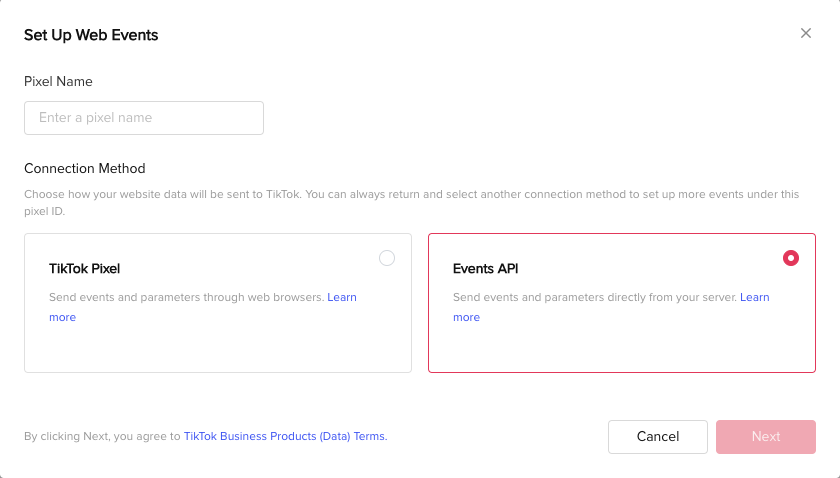TikTok Events API
TikTok this month announced the launch of a consolidated endpoint for its Events API, a secure server-to-server (S2S) integration that allows advertisers to share marketing data with TikTok.

TikTok this month announced the launch of a consolidated endpoint for its Events API, a secure server-to-server (S2S) integration that allows advertisers to share marketing data with TikTok.
The new consolidated endpoint allows advertisers to enable Web, App, and Offline signal use for their campaigns and remove the need for siloed endpoints for each use case.
TikTok says the era of third-party cookies as we know it is ending and advertisers are looking for more control over their data and how it is used, and the use of ad blockers and secure web browsers are on the rise.
The new Events API endpoint offers several benefits to advertisers, including:
- Decreased barriers to pass omnichannel event data to TikTok. Omnichannel signals are key for advertisers to understand the true value that TikTok drives for their business.
- Unified Implementation. Having one unified endpoint allows advertisers to enable Web, App, or Offline signals through a single implementation process.
- Future Proofing Signals. To prepare for future changes across browsers, operating systems, and privacy regulations globally, advertisers can use one endpoint for their secure server-to-server setup to establish a direct path with TikTok.
- Easier Maintenance. By cutting down the number of endpoints for the advertiser, this also results in fewer endpoints to manage and maintain.
Advertisers can integrate with the Events API using a variety of methods, including:
- Commerce Partner Integration. For advertisers partnering with one of TikTok’s Commerce partners (such as Shopify and WooCommerce), setting up Events API only takes a few minutes in TikTok Events Manager.
- Data Partner Integration. For advertisers partnering with one of TikTok’s Data partners, such as Customer Data Platforms (CDPs), Tag Managers, CRMs, and other marketing technology partners, setting up Events API is done via the partner platform.
- Direct Integration. For advertisers who prefer the utmost control over their integration, setting up the Events API is achieved by dedicating in-house developers to follow TikTok’s Marketing API documentation.
To unlock the full suite of benefits that data connections can provide, TikTok recommends that brands leverage both the TikTok Pixel and the Events API data connections. On average, advertisers using TikTok Pixel and Events API together see 19% more events captured and a 15% improvement in cost per action.
TikTok Pixel vs TikTok Events API
TikTok Pixel and TikTok Events API are both tools that allow advertisers to track and measure the performance of their TikTok campaigns. However, there are some key differences between the two.
TikTok Pixel
- Client-side implementation: The TikTok Pixel is a JavaScript code snippet that is installed on an advertiser's website. This means that the pixel is able to track user activity on the website, such as page views, purchases,and signups.
- Limited event tracking: The TikTok Pixel can track a limited number of standard events, such as page views,purchases, and signups. Advertisers can also create custom events to track specific actions that are important to their business.
- Easy to implement: The TikTok Pixel is relatively easy to implement, and there are many resources available to help advertisers get started.
TikTok Events API
- Server-side implementation: The TikTok Events API is a server-to-server (S2S) connection that allows advertisers to send event data directly from their own servers to TikTok. This means that the Events API can track a wider range of events, including offline events.
- Extensive event tracking: The TikTok Events API can track a wide range of standard events, as well as custom events. Advertisers can also send event data with additional parameters, such as product ID and order value.
- More complex to implement: The TikTok Events API is more complex to implement than the TikTok Pixel, and it requires some technical expertise.

